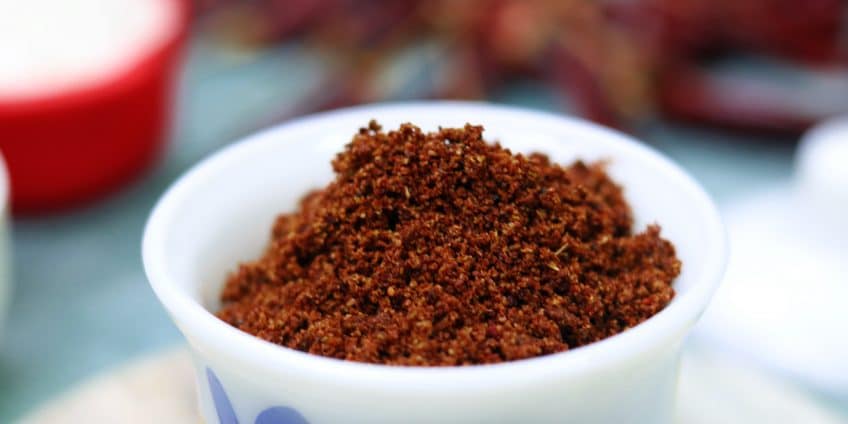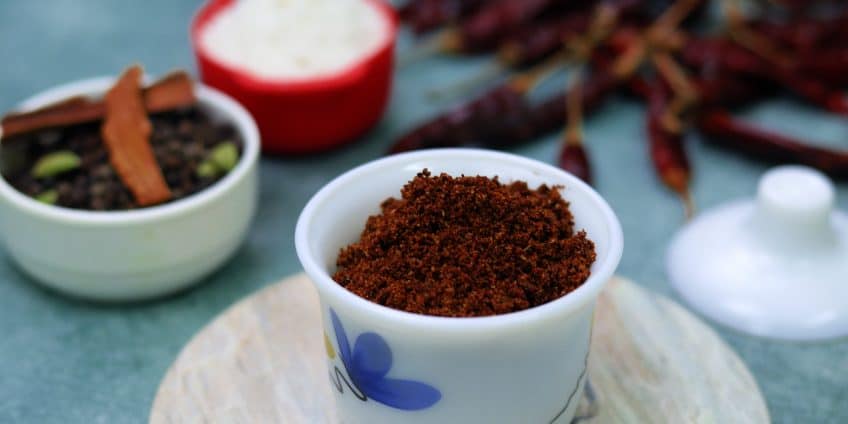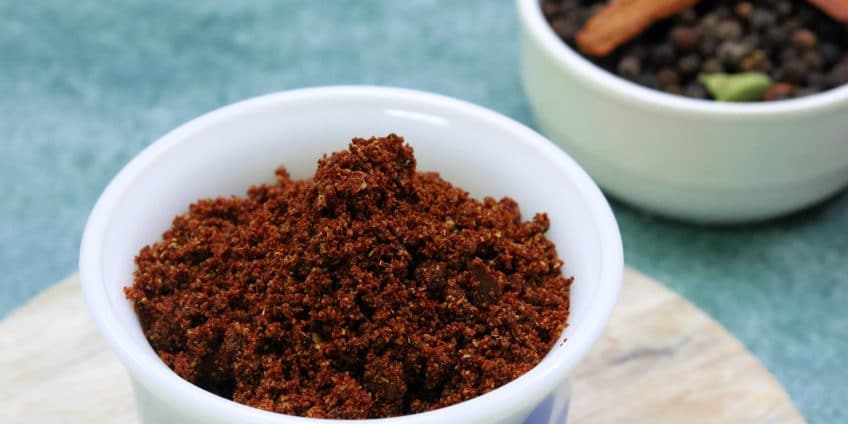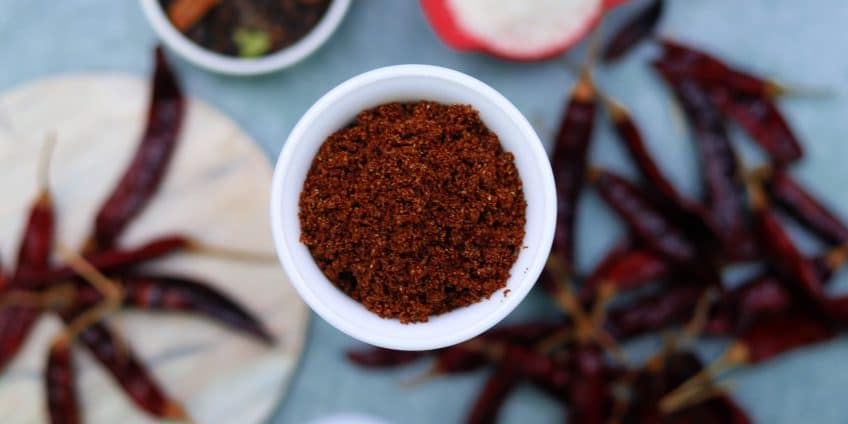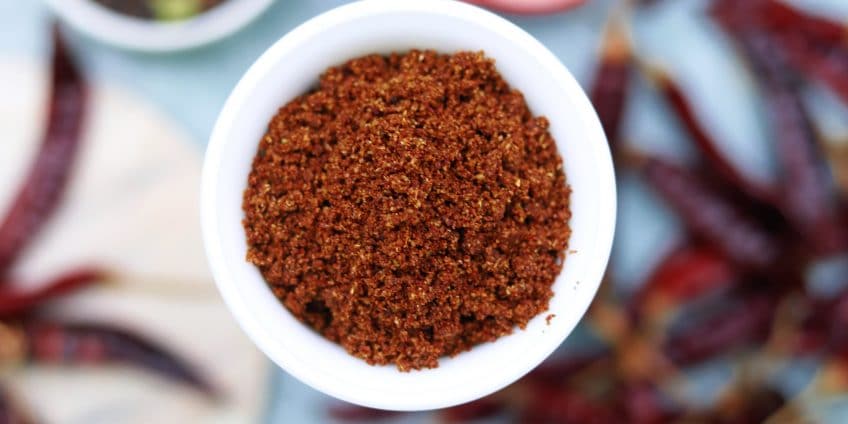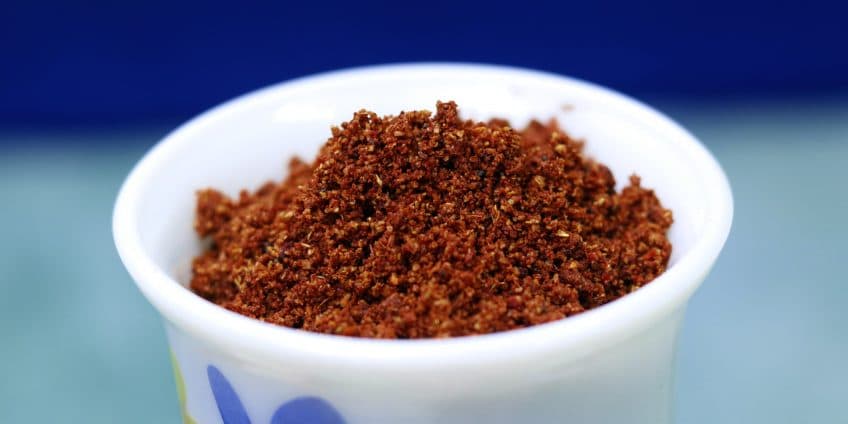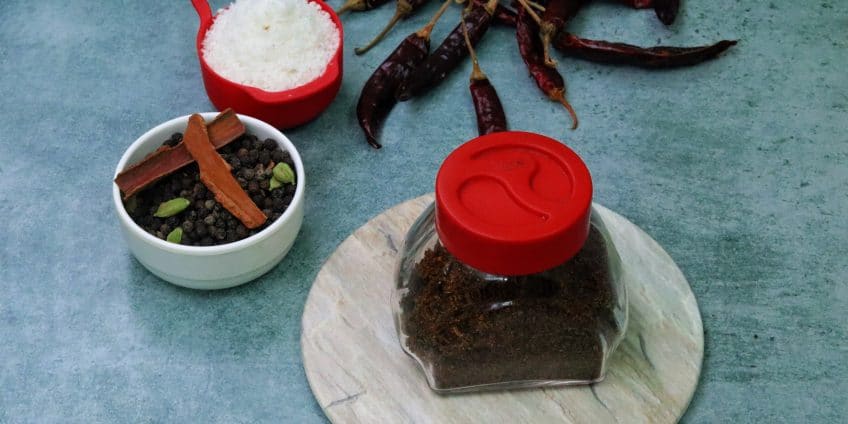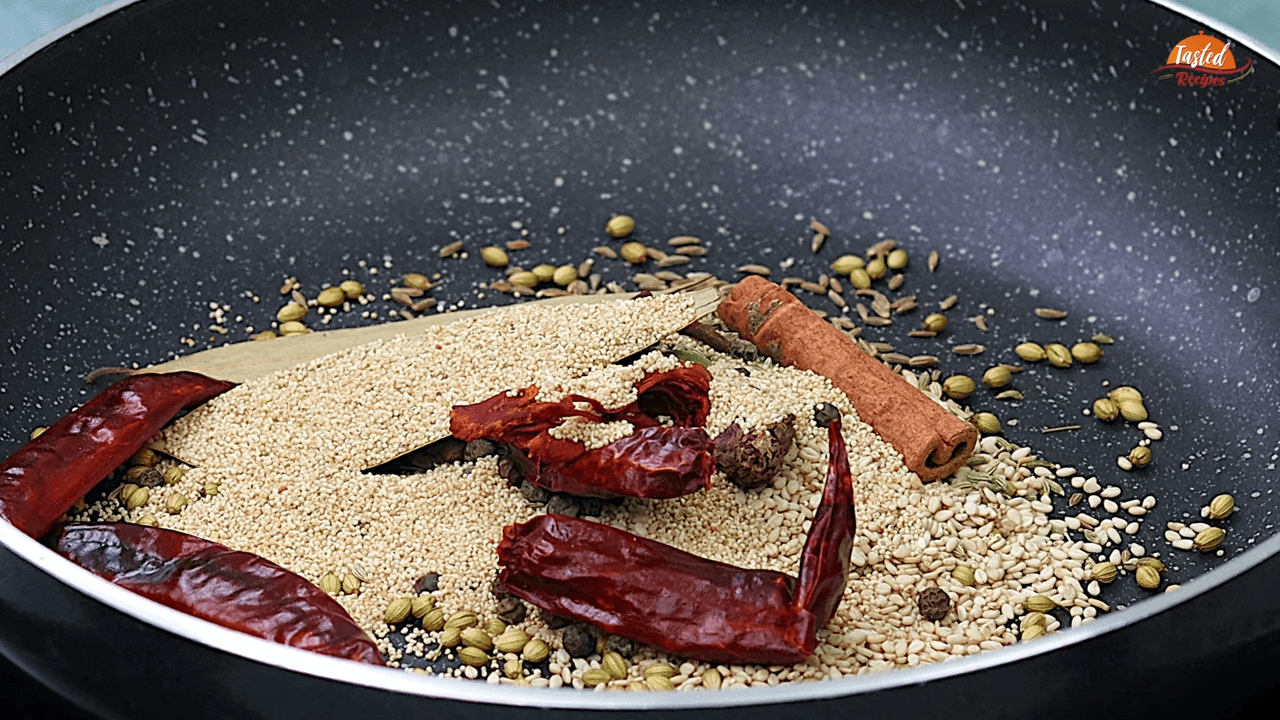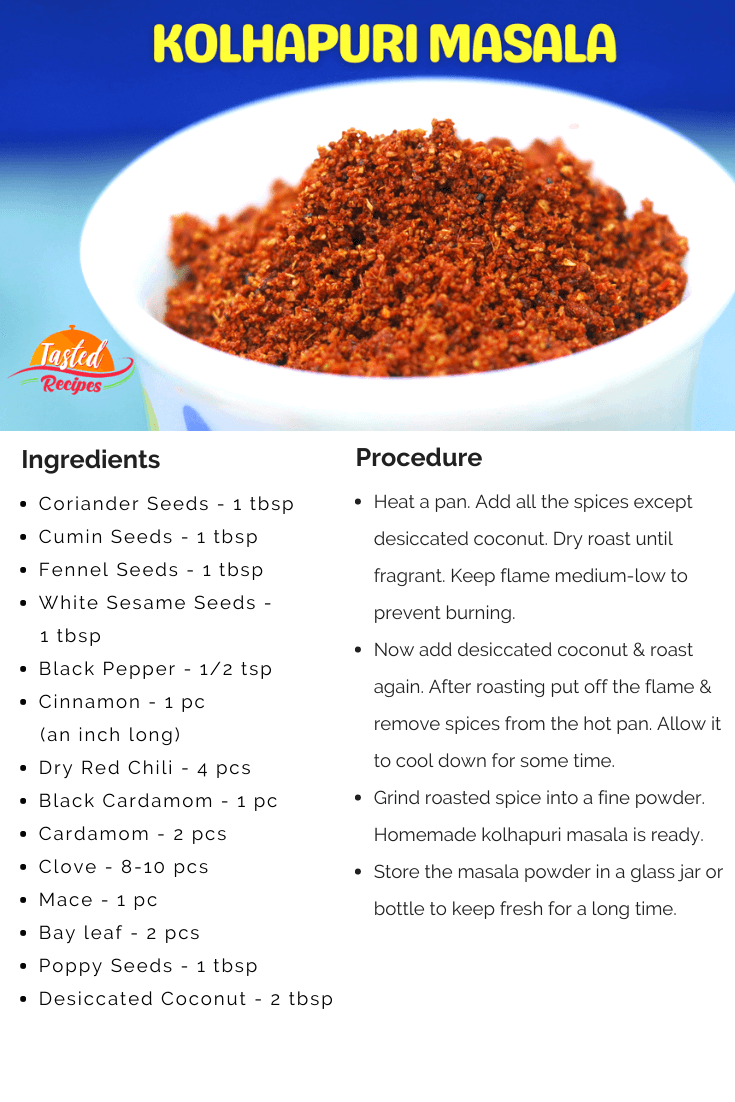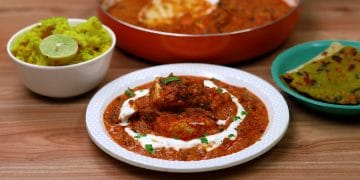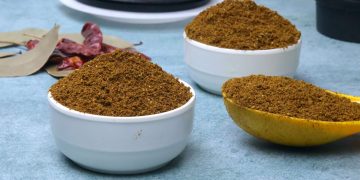Kolhapuri Masala is an excellent addition to your masala regime. This masala is an essential curry powder frequently used in Maharashtra. Also known as Kolhapuri Tikhat, this masala powder is perfect for spice lovers.
It makes your dish extraordinary by giving a perfect flavour & texture. In short, the Kolhapuri masala is the perfect combo of taste & tradition. Hence, today we will learn to make traditional Kolhapuri masala at home.
Generally, this masala is of two types. The Dry and Wet Kolhapuri masala. Dry masala is what we made here. Whereas, wet masala consists of onion and garlic as well. The wet masala must be used within 2-3 days or better yet immediately.
What Is Added In This Kolhapuri Masala?
To make this hot & spicy masala powder, we require whole spices. All these spices are readily available at grocery stores. Hence there’s no reason not to make it in the first place. Let’s see what we need.
Regular Whole Spices
The Kolhapuri masala requires six regularly used whole spices. They are the base of this masala powder. Thus, we need coriander, cumin, black pepper, cinnamon, clove & bay leaf. Indian curries are incomplete without these spices. Each one of them has an individual taste profile.
All of them together will give a distinct taste & aroma. Hence, please do not skip any. Additionally, do not worry about the masala being very hot & spicy. On the contrary, the Kolhapuri masala is indeed very teekha.
Cardamom in Kolhapuri Masala
We will be using two types of cardamom. One is the big black cardamom aka काली इलाइची and the second one is the regular green cardamom aka हरी इलाइची. Now here, you can skip the green one.
The purpose behind adding cardamom is to get a piney, fruity & menthol-like flavour. However, too much can be slightly astringent. Hence, do not exceed the measurements.
Fennel Seeds
Roasting dry fennel seeds, aka सौंफ will give a warm & sweet aroma. It is because they are extracted from the dried seed of the fennel herb. The appearance is quite similar to that of the cumin seeds.
White Sesame Seeds
They add a nutty & woody flavour similar to cumin & coriander seeds. Sesame seeds have a mild, sweet & nutty flavour. Moreover, it has a satisfying crunchy taste when eaten whole. We will roast them with other spices to bring out a stronger almond-like flavour & fragrance. Adding them to curries makes the dish more evident.
Dry Red Chili
We need traditional dry red Kolhapuri chillies. Yes, they are extremely hot. That’s the reason why this masala is super teekha in taste. Not only this, but any recipe made using this masala powder will be sizzling hot.
A step further, the red colour of the masala is all due to the fiery dry red chillies. Suppose Kolhapuri red chillies aren’t available to use the regular ones.
Mace
Mace is an underdog item in this masala powder. First, nutmeg is not mace & vice versa, although they come from the same nutmeg tree. Nutmeg is the seed, whereas the lacy membrane that surrounds the seed is mace. The flavour is sweet, woody & warm, with a mild pungent twist. It’s similar to nutmeg.
In short, mace is soft but not sweet like nutmeg. If you observe, the flavour profile of mace is a combination of cinnamon & pepper. Okay, now don’t replace mace with nutmeg. It’s contradictory to other spices in a curry.
Poppy Seeds
Poppy seeds are light in weight & taste, similar to chia seeds. They are mildly sweet & taste slightly nutty when roasted. These seeds are nutty & even a little bit woody. Due to the mild taste, these seeds are often used in Indian masala powders.
Desiccated Coconut
There’s an interesting reason behind using desiccated coconut here. The flavour profile of dry coconut is fruity, milky & sweet. Surprisingly, it also has a slight note of melted butter. Yes, it tastes like butter. Adding it will give a creamy taste to your curry. Do not skip this item.
The ingredient list concludes here. All in all, we need around fourteen spices to make this masala powder. After the ingredients, let’s discuss what will our masala look & smell like.
Taste & Texture of the Kolhapuri Masala Powder
The texture of our Kolhapuri masala won’t be free-flowing. Not really like salt or other dry powders. It is because of the white sesame seeds. When sesame seeds are crushed, they release oil. This oil mixes up with different spices & reduces the dryness.
In other words, the sesame seeds oil integrates moisture. Hence, you don’t get a free-flowing powder. Instead, what you get is a coarse texture.

Secondly, it won’t finely crush like turmeric powder. You can see minute pieces of spice even after crushing them on high power. We need the same coarse & moist texture.
Above all, your masala powder will have an unmatched fragrance. I mean, none of the curry powders in your kitchen closet will smell like this Kolhapuri powder. It will have a solid nutty & woody aroma. It is because we have roasted everything.
Storing the Kolhapuri Masala
Storage is the key point here. Food items, especially spice & masala mix, demand good storage. The word good storage means the one that elevates the shelf life. For example, cookies need glass containers to keep their crispiness intact.
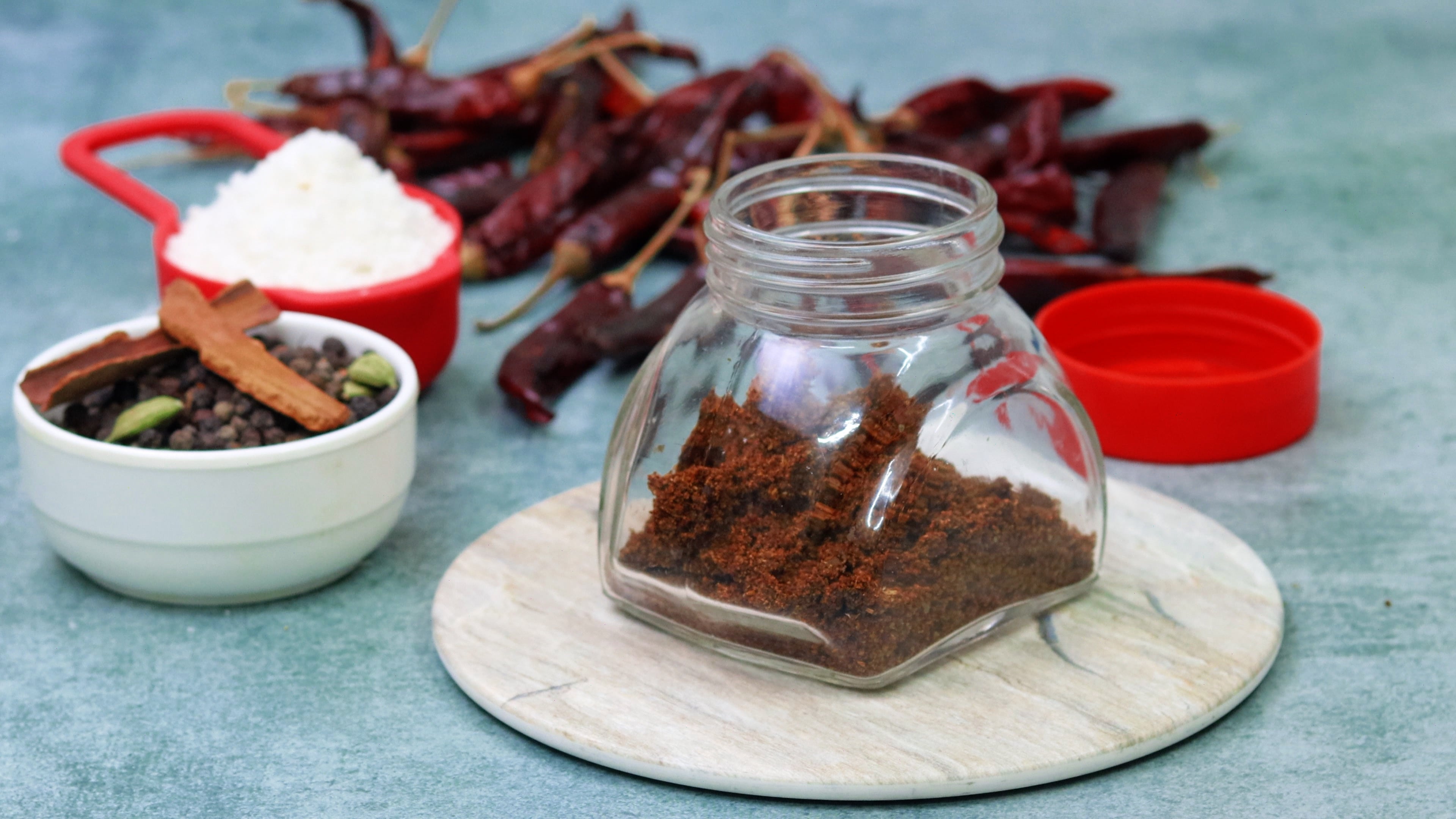
In the same way, this masala needs to be stored in a glass container. Moreover, it must be tightly shunted. This way, moisture won’t penetrate inside & spoil the powder. Above all, glass is considered friendly when it comes to storing food. Not only this, but glass containers are the first choice of housewives for storage.
Kolhapuri Masala FAQs
Making this masala powder at home is easy. The best part is you will have the artificial colour & essence-free powder to make your favourite dish. With this in mind, here are some frequent queries with answers.
Can I use black sesame seeds instead of white?
No. Don’t add the black sesame seeds. The colour of your masala powder will be dark instead of reddish maroon.
I don’t have black cardamom. What is the substitute?
The green cardamom is a flavourful substitute for the black one. Add three green ones for one black cardamom. One more thing. Crush the black cardamom before you add it.
Can I replace black pepper with white pepper?
Since the quantity of black pepper in this recipe is small, you can swap white pepper with black ones. There won’t be a noticeable difference in the taste & texture. But if the quantity exceeds 1 tsp, then use only black pepper.
There are too many spices. Will this masala make my sabji too hot & spicy?
No. It is in your control how much you want to add the masala powder. Adding too many spices won’t make the recipe tasty. Instead, a perfect balance of the same will make it delicious.
What is the substitute for Kolhapuri dry red chillies?
What is the difference between mace & days nutmeg?
Nutmeg is the seed & mace is the outer covering. The flavour profile is unique, and so is the application. For instance, we use nutmeg in kheer for fragrance, whereas mace in sabji.
Can I add cashews or other dry fruits?
No, don’t add dry fruits here in the masala powder. Instead, add them while making gravy. Dry fruits will dilute the potent taste. However, they might smell good but do not attempt adding them.
So that was it with the recipe. I hope you will make it. Let me know in the comments how was your experience.
